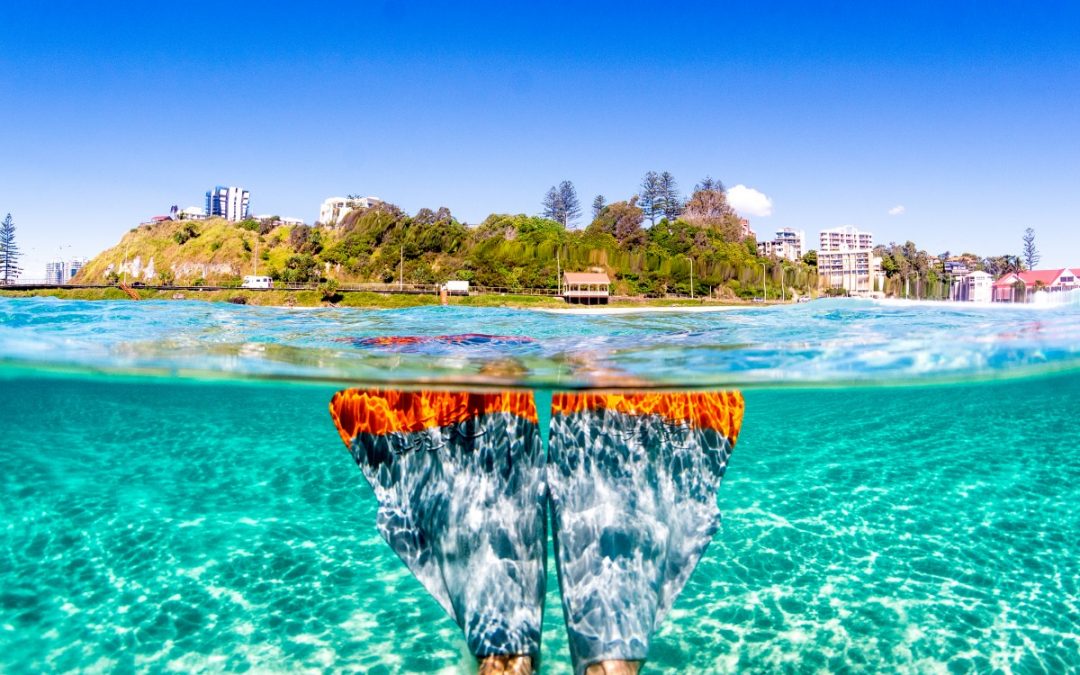Why leave all of the best Gold Coast dive sites and snorkel spots to the tourists? Marnie Diehl tells locals where all of the best underwater hideaways are!
The Gold Coast is home to some premier inshore diving sites, boasting year-round access and a fish diversity unequalled by any other city in Australia.
If you are into diving or snorkelling, you may know of many famous dive sites. But none are within the city limits of a major urban centre and enjoy the luxury of being primarily shore-based.
What’s particularly special about the Gold Coast is the abundance and diversity of fish life. Over the past few years, the Queensland Museum has recorded no less than 370 species of fish from the Gold Coast Seaway alone.
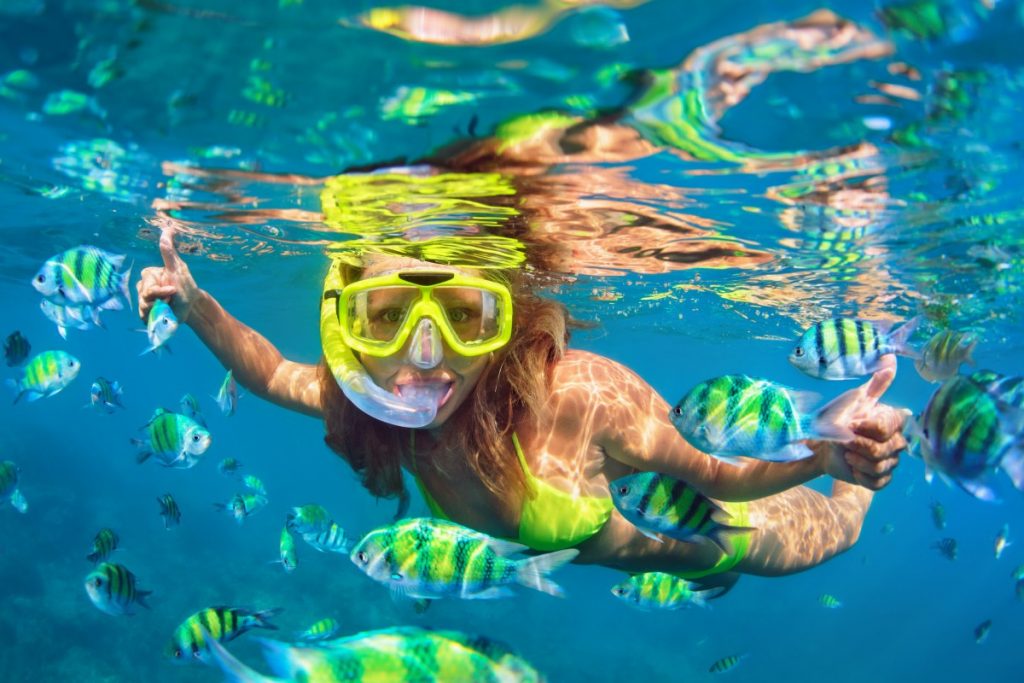
GOLD COAST SEAWAY
When we talk about Gold Coast dive sites and snorkel destinations, The Seaway always makes the list.
It is noted as the most reliable site in the region for Whitespotted Guitarfish, Pink Whiprays and Cownose Rays.
Groups of up to eight Queensland Gropers are not uncommon here. Large schools of Bigeye Trevally – rarely seen in such numbers in any other inshore locality – are a virtual fixture around the submerged pipelines.
There are five main dive site areas of the Gold Coast Seaway where the annual water temperature range is a mild 18-27 degrees Celsius. This makes it ideal for relaxed and pleasant diving.
Dive areas inside the seaway are not affected by sea conditions and may be dived all year round.
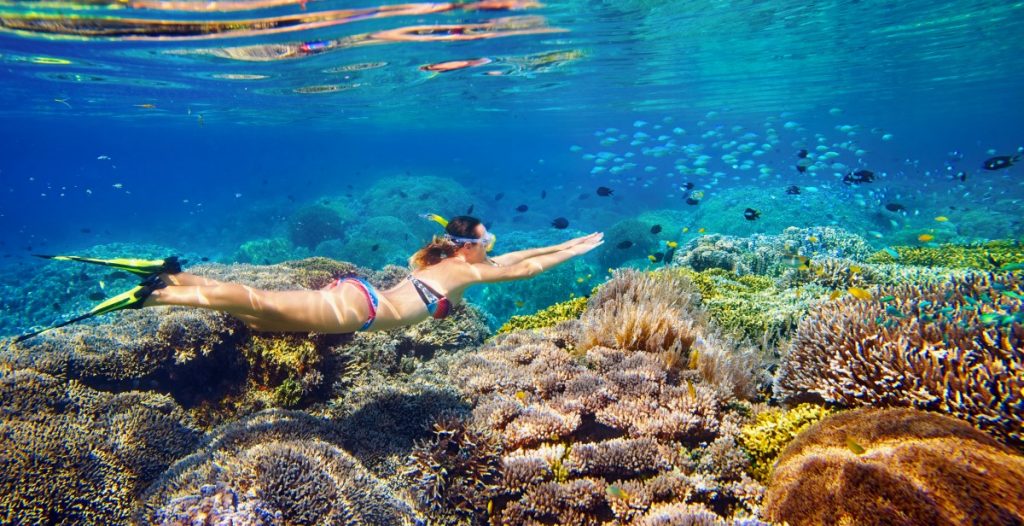
South Wall Dive Area
By far among the most popular year-round Gold Coast dive sites is the South Wall Dive Area, which encompasses the Short Pipe, Sand Pipe, and Eagle Ray Cleaning Station.
Maximum depth across the seaway at the Sand Pipe is 15 m. Fish species include colourful Butterflyfish, Wrasses, Surgeonfish, Bream, Tarwhine, Whiting, Flathead, Mangrovejack, Trevallies, Mulloway, Ghostpipefish, Seahorses, Waspfish, Anglerfish, Scorpionfish, Lionfish, Giant Queensland Groper, schools of Bigeye and Giant Trevally, Eagle Rays, Bull Rays and Guitarfish.
If you are a conservative diver and don’t like current, it is best to wait until the top of the tide. If you don’t mind current and like drift diving, hop in early.
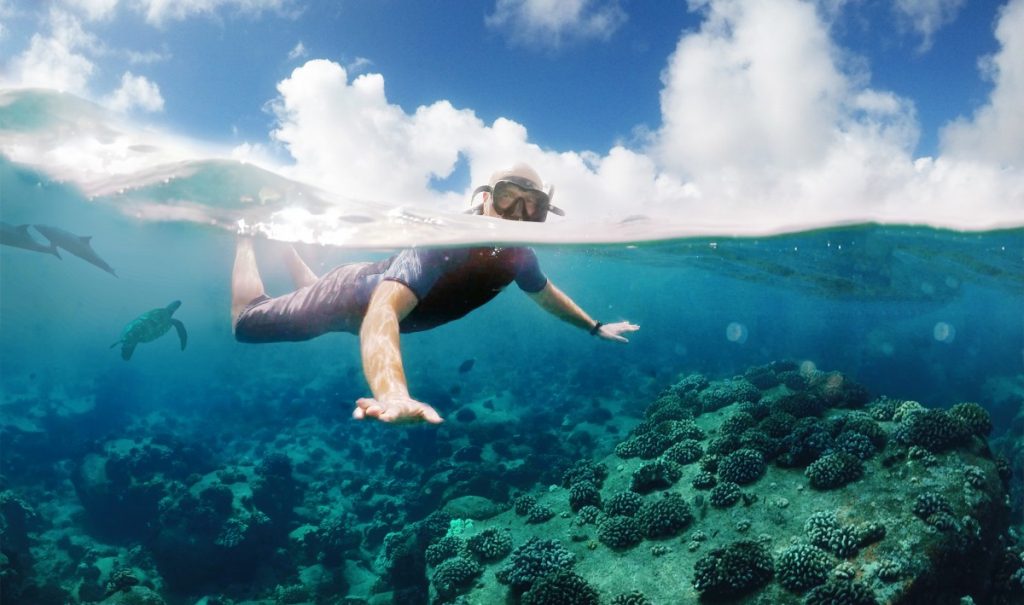

The South West Wall Dive Area
The South West Wall Dive Area has less current flow and an easy sandy beach entry point, so is an ideal location for new divers.
Here you will find all that creeps and crawls, such as the Highcrown Seahorse, the Stick and Tiger Pipefishes, the Ornate and Robust Ghost pipefishes, the Dwarf and Zebra Lionfishes, plus many more fascinating creatures.
A small seagrass bed is located only metres from the shore. On night dives during the appropriate season, Tiger Prawns can be seen creeping around the seagrass. During the day, squid are observed hovering over their egg clutches.
Wave Break Island Dive Area
Another area similar to the South West Wall is the Wave Break Island Dive Area.
Wait until high tide before entering. Conditions remain pleasant for diving for up to four hours after the high tide.
Wave Break Island is strictly a boat access area. For those without boats, two local dive operators run daily dive tours from Marina Mirage.
Diving here is ideal for first-timers and snorkelling – being more protected from boat traffic and having an easy beach start and a gentle drop to 11 m.
South-East Wall Dive Area
For big critter action, the South-East Wall Dive Area and North East Wall Dive Area have more turtles, big pelagic fish and rays.
Sea conditions very much dictate any diving here. But when it is calm, there is a hive of activity on the walls towards the entrance.
This is an area restricted to experienced divers, and diving should be carefully planned according to tides and prevailing currents.
The South-East Wall Dive Area may be accessed from the shore, but it is more sensible from a boat. Visibility here is generally the clearest in the seaway, and you can observe lots of Surgeonfish and other schooling fish towards the entrance.
Larger rocks here produce ideal habitat for resting turtles and Wobbegongs.
North-East Wall Dive Area
The North-East Wall Dive Area reaches a depth of about 10 m on the northern side of the tip but drops to 20 m on the southern side.
This location has the most pelagic fish activity, and the cleaning stations host huge Bull Rays and Eagle Rays.
You can see Pickhandle Barracuda, Mangrove Jack and Mulloway here, as well as encounter seasonally large Queensland Gropers. Luderick gather here in their thousands at spawning time.
Visibility is generally less at the wall on this side of the seaway.
The Gold Coast Seaway caters for entry-level through to extreme diving. It provides easy access to the most diverse fish life in any Australian city. And the only relatively safe year-round mainland shore diving in Queensland.
Local knowledge is important, and daily dive tours are available from several local dive shops.
In addition to the Gold Coast Seaway dive areas, there are a handful of special spots down the other end of the coast, including Palm Beach, Kirra, and Cook Island.
The Wreck of the Scottish Prince
After sinking in 1887, the Scottish Prince wreck lies on the sand 800 metres from the beach near the Southport Spit.
Only the hull remains and is covered with soft corals and sponges. It has become a haven for crayfish, Shovelnose rays, as well as Leopard and wobbegong sharks.
You can find unusual tropical fish such as the leafy scorpionfish among the broken decking.
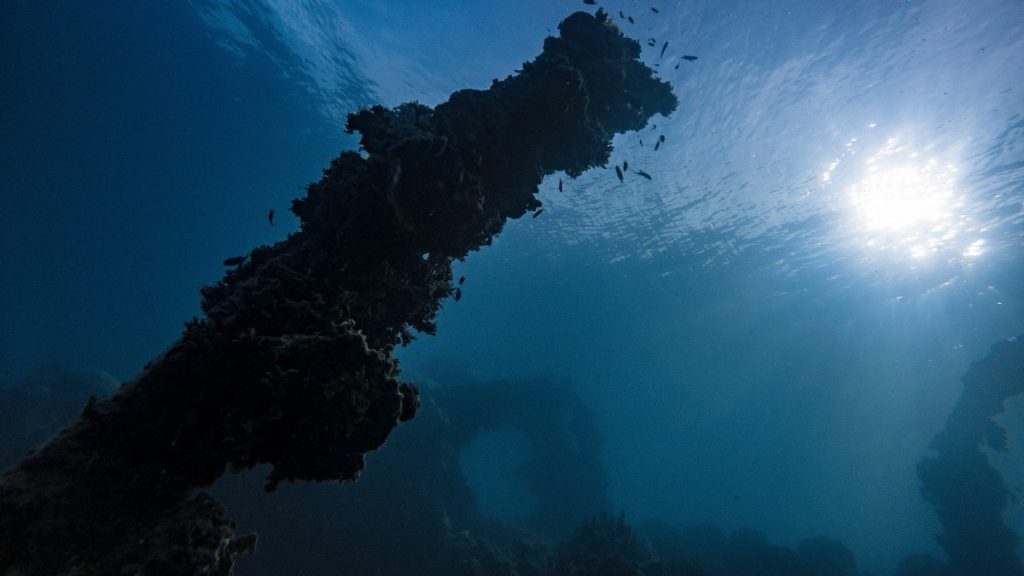
Palm Beach Reef
Palm Beach Reef on the Gold Coast is a large reef with sections of rocky outcrops. It also boasts of several large bommies with a variety of soft corals and sponges.
The top of the reef rises to just five metres below the surface.
Marine life is abundant with stingrays and the odd bronze whaler or hammerhead. In summer, you can find Wobbegongs and leopard sharks as well.
Blue wrasse, parrotfish, painted wrasse, and a variety of reef fish with large schools are the norm.
Kirra Reef
Kirra Reef is right at the southern end of the Gold Coast and consists of scattered rocky outcrops that are covered in kelp fronds. After being buried beneath a blanket of sand during a sand-pumping project, Kirra Reef is back better than ever!
It’s over 100 metres in length and home to soft corals, anemones, and an abundance of fish species.
Drift from rock to rock and investigate every nook and cranny, with morays hiding in the most unexpected places.
The beauty of this site is in watching the smaller species. Porcupine fish abound here, and wobbegongs and macro life inhabit the reef.
What makes Kirra Reef unique is the location. It’s just a few hundred metres off the shore, so divers can walk down on the sand, put on their tanks and swim out.
It’s also protected on three sides by land, which means it’s great for diving most of the year.
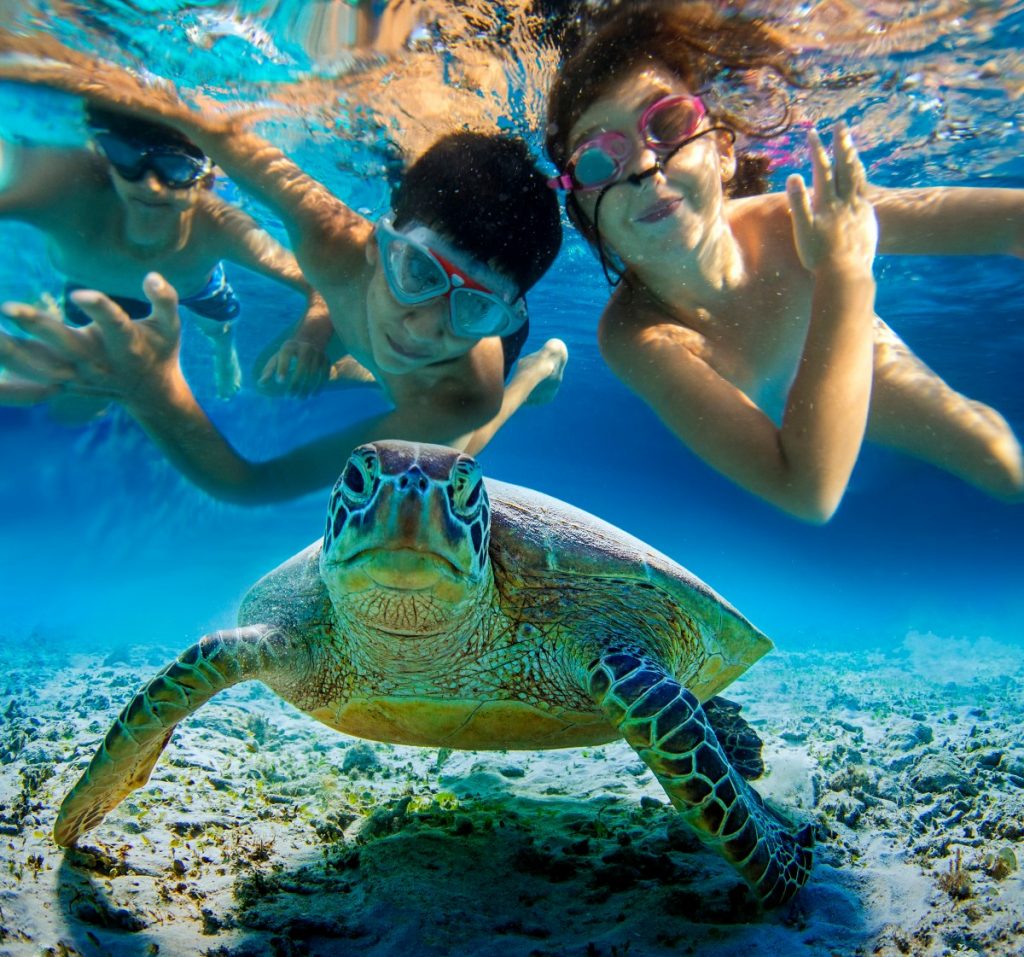
Narrowneck Artificial Reef
A hundred metres from the shore, directly in front of the lifeguard tower at Narrowneck Beach, is an artificial reef made from geotextile containers.
It was originally designed for beach erosion protection and as a surfing break. Yet it has proved an ideal surface for seagrass to grow, as well as soft coral, ascidians and crinoids in some sections.
Close to shore, you’ll find crayfish, wobbegong sharks, nurse sharks, pineapple fish, lionfish, and cardinal fish. Nudibranchs, shrimp and octopus are also found in this area.
Further out from shore, you can commonly observe shovel nose rays, cow tail rays, bull rays and turtles in the sand beside the containers. Schools of bait fish constantly pass by, as well as the occasional eagle ray.
Cook Island
While the places mentioned in this article are all Gold Coast dive sites, this next one is not technically on the Gold Coast. But there are many local operators that depart from Coolangatta and head out to Cook Island for dive and snorkel tours.
From Coolangatta, it takes 10 minutes to get to Cook Island by boat. And it’s certainly worth the trip!
Cook Island is a formal marine reserve and home to a permanent colony of green and loggerhead turtles. It plays host to an amazing array of marine life, offering spectacular temperate, subtropical, and tropical species of fish, rays, eels, and octopus. ■
If you like being under the ocean, then check this out!

Editor for Silver Magazine Gold Coast
